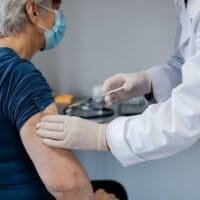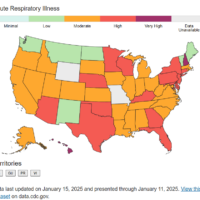When local schools adjourned last year for summer break, 1,525 students — approximately 16% — had spent time in quarantine after a school-related exposure to COVID-19. As of Thursday, 145 Christian County Public School students were in quarantine.
It would be an understatement to say the pandemic has caused a disturbance in the lives of families with school-aged children.
Starting Monday, the district will offer students and staff exposed to COVID-19 in a school setting an alternative to quarantine — one designed to keep more students in the classroom and lessen disruption for working parents.
Under the district’s “Test to Stay” program, school-acquired close contacts will have the option to take a rapid antigen COVID-19 test every morning for five consecutive school days, the district announced Thursday. Technically, students need to remain negative for COVID-19 for seven consecutive days, but since every week includes a two-day weekend when students will not be tested, the district will require five consecutive schools days with a negative test result. Individuals who test negative can return to the classroom instead of quarantining for 10 days. Or they can opt to complete a 10-day quarantine while learning remotely.
The nasal swab tests will be administered by Pearl Medical and Diagnostic Laboratory from 6 to 9:30 a.m. Monday through Friday in the Performing Arts Center at Christian County Middle School. A parent or guardian must transport their student to the testing clinic and must provide a signed consent form on the first day of testing. Forms can be found on the district’s website. Test results will be available in about 15 minutes, according to district spokesman John Rittenhouse.
Participants won’t be required to test on weekends — those days will be counted as negative tests, according to the district’s announcement. Students who complete their first test on a Monday and end the seven-day period required to test out of quarantine with a weekend will be allowed to return to school, but must be asymptomatic, Rittenhouse told Hoptown Chronicle.
More districts adopting ‘Test to Stay’ programs, despite lack of endorsement from federal health officials
While the “Test to Stay” approach is gaining momentum across the country, the CDC says that it “does not have enough evidence” to support the strategy. The agency continues to recommend that close contacts who have not been fully vaccinated quarantine for 14 days.
Nevertheless, several states have adopted modified quarantine protocols. However, the programs can vary widely.
In March, Utah passed a law requiring mass testing when a school’s infection rate reaches a certain level. The legislation followed the implementation of the state’s “Test to Stay” program, which involved school-wide testing to continue in-person instruction if a school crossed a defined outbreak threshold.
According to a study of the pilot programs that were implemented between Nov. 20, 2020, and March 20, 2021, “Test to Stay” identified 1,886 COVID-19 cases among students and “likely helped reduce SARS-CoV-2 transmission in schools and communities through isolation of students with diagnosed infections and quarantine of contacts.”
State health officials said the strategy also allowed for the completion of 95% of high school extracurricular events and saved an estimated 109,752 days of in-person instruction days for students.
“For most students, being able to attend school in-person and participate in extracurricular activities is best for their learning as well as their social and emotional well-being,” Dr. Adam Hersh, who collaborated with Utah health officials to study test-to-stay programs, said in a news release about the program. “When combined with other prevention strategies, most importantly masking, these testing strategies helped keep our schools safe and open.”
A recent study out of England also found that schools following similar modified quarantine protocols did not have significantly higher rates of infection, suggesting the approach could be effective.
Health experts encourage understanding of antigen testing limitations, urge layered approach
Health experts, including the authors of Utah’s report, encourage schools participating in modified quarantine programs to be familiar with the limitations of antigen tests, which work best when someone has symptoms or it has been seven days after exposure. For these reasons, districts are encouraged to implement layered mitigation strategies that include vaccination, masking, ventilation and physical distancing.
Because antigen tests provide faster results and are less expensive than the “gold standard” polymerase chain reaction (PCR) test, they are often used for screening in workplaces and before air travel. But antigen tests also are less sensitive and more likely to produce a false negative.
PCR is a type of nucleic acid amplification (NAAT) test that detects very small concentrations of a virus that other tests might miss. Antigen is a type of viral test that detects specific proteins on the surface of the virus and can identify people who are at the peak of infection — when individuals are presumed to be infectious.
According to the CDC, the tests’ ability to detect the virus varies depending on the time in the course of infection and is considered to have “moderate to high” sensitivity during this virus’ peak.
To offset the decreased sensitivity of antigen tests, the Food and Drug Administration recommends serial testing — taking multiple tests over several days — to improve the chance of catching asymptomatic infections.
Julia Hunter is the engagement editor for Hoptown Chronicle. Reach her at julia@hoptownchronicle.org.





